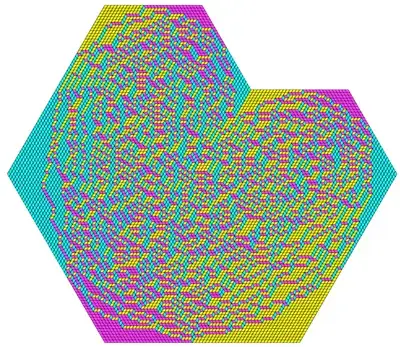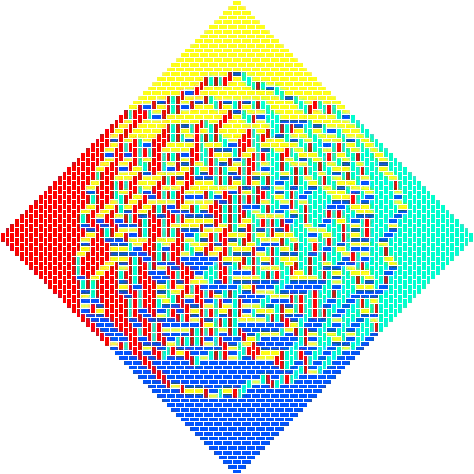In the area of random tilings, there are many results that fall under the term "Arctic Circle Theorems." This roughly means that if one chooses a tiling of a specific region uniformly at random, then there will generally be a boundary region outside which the tiles are "frozen" in a fixed configuration. Here are some computer generated examples:


I keep seeing references in the random tiling literature to models in statistical physics but I've never actually seen a picture from an experiment. I've heard for example that random dimer models correspond to adsorption of a gas onto a thin film. I'd be thrilled to see some pictures of these limit shapes, from say a scanning electron microscope (obviously the tiles involved should be large enough to discern, so perhaps a gas is a bad example). I'm not asking for a bunch of examples, just one or two is more than enough. An example that would fit my criteria is one where the partition function is close to one of a random tiling model, such as dimers or rhombii.